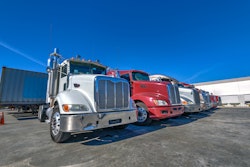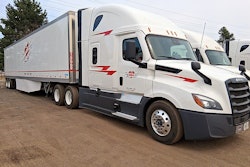The National Highway Traffic Safety Administration (NHTSA) has made it clear that it wants a 30 percent reduction in stopping distance for heavy trucks, and new regulations are somewhere in the works. But they’re not imminent. In fact, the agency has yet to even issue a notice of proposed rulemaking.
“We think the final rule will come after 2007, but before 2010,” says Kishor Pendse, president of newly formed joint venture, Bendix Spicer Foundation Brake (BSFB) LLC. His rationale is that piling braking regs immediately on top of ’07 emissions standards could be more regulation than the industry can handle at once.
Before NHTSA announced its intentions, there was some speculation that the eventual regulations would be so severe that air disc brakes would be necessary to meet them. But now it appears that the target will be reachable with drums.
Currently, a tractor-trailer must be able to stop from 60 mph in 355 feet or less. And, “An existing air brake system, if well maintained, can already stop in less than 300 feet,” according to Paul Johnston, senior director of the North American Foundation Brakes Business at ArvinMeritor Commercial Vehicle Systems.
Using the 30 percent reduction guideline, the new target would be 248 feet, minus a 10 percent cushion, a goal manufacturers agree can be reached with more aggressive drum brakes on the tractor – particularly on the front axle.
But in response to new regulation, some fleets could be inspired to at least try air discs. “We think use of air discs will grow,” says BSFB’s Pendse, “even though they won’t be required.”
“We think we’ll see a 20 percent penetration of air discs on steer axles over the next three to five years,” adds ArvinMeritor’s Johnston.
In a way, it’s kind of a shame that air discs won’t be a necessity, since their benefits are indisputable. The braking torque they produce is far better than drums, and their performance isn’t nearly as affected by variations in speed and temperature.
Also, because of their smaller friction-surface area and “wiping” action, they do a good job of removing water, and are virtually immune to water-induced fade.
Finally, air discs minimize braking variations between the left and right sides of a vehicle, which reduces pulling.
So why aren’t more North American fleets spec’ing air discs now, especially since they have the potential to reduce 60 to 0 mph stops to well below 200 feet? Passenger cars can make the same stop in about 125 to 140 feet, and the closer trucks can get to that kind of performance, the less the likelihood of turning an Accord into an accordion when it makes a panic stop in front of you.
“In our case, air discs add a premium of about $200 per wheel end,” explains BSFB’s Pendse. And, for now, it’s the old Catch-22: The air disc is a product that doesn’t sell well because it’s expensive, and it’s expensive, in large part, because it doesn’t sell well, and there are no production economies of scale. “We’re trying to get that premium down to about $100 per wheel end,” says Pendse. “We think we can do that in a year or so. Air disc use will grow and prices will come down, but drums will be around for a long time.”










